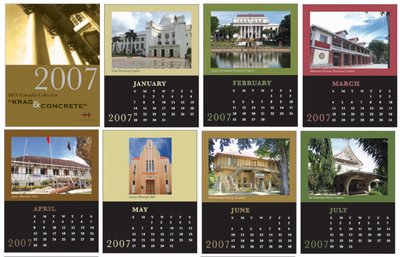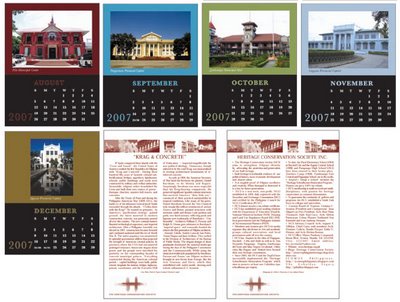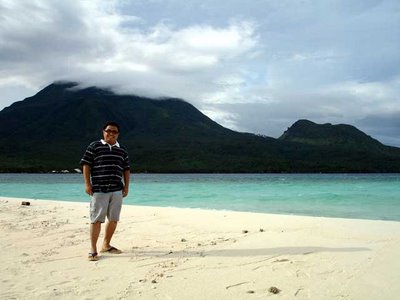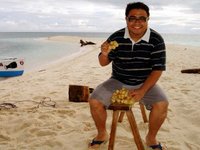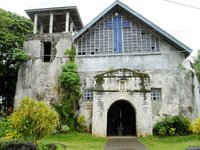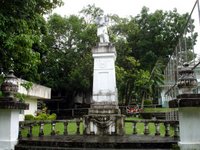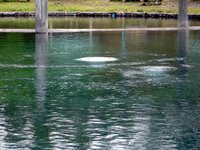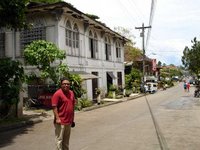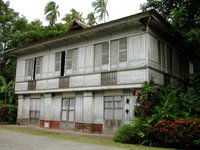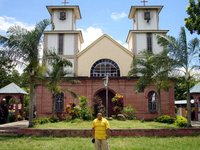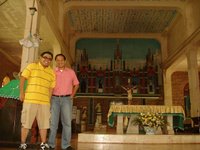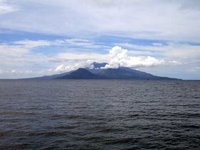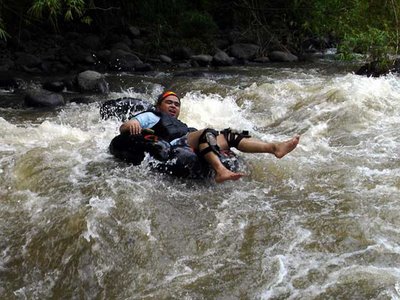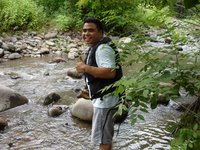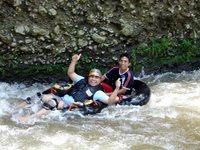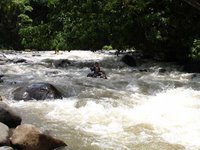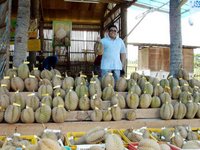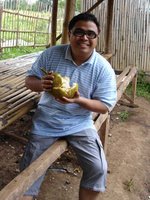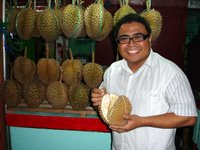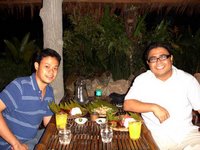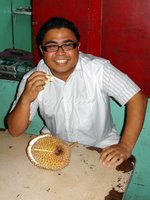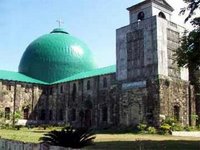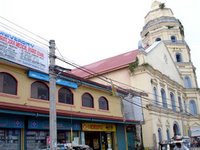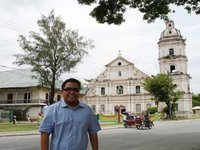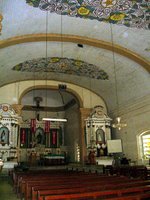 I just came back from a trip to Isabela where I attended the 2nd Nuang Festival in the town of San Agustin upon the invitation of my SSEAYP batchmate Vice-Mayor Jules Lamug, whom I heard is currently the youngest vice-mayor in the country. San Agustin is the southernmost town of Isabela. But to get to it, you have to pass by Santiago City and the towns of Echague and Jones.
I just came back from a trip to Isabela where I attended the 2nd Nuang Festival in the town of San Agustin upon the invitation of my SSEAYP batchmate Vice-Mayor Jules Lamug, whom I heard is currently the youngest vice-mayor in the country. San Agustin is the southernmost town of Isabela. But to get to it, you have to pass by Santiago City and the towns of Echague and Jones.Although the roads to Echague and Jones are well-paved, once you leave the poblacion of Jones, you will have to drive through rough and muddy roads going to the town. Good thing there are new bridges being constructed since the current ones are too low and are easily susceptible to bridge closures when the waters of the Cagayan River overflow.
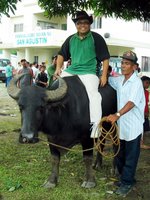 San Agustin is the top producer of Murrah buffaloes in the entire country which is why every September 27, a day before their foundation day or town fiesta, they hold the Nuang Festival, nuang is Ilocano for buffalo, to celebrate this feat.
San Agustin is the top producer of Murrah buffaloes in the entire country which is why every September 27, a day before their foundation day or town fiesta, they hold the Nuang Festival, nuang is Ilocano for buffalo, to celebrate this feat.This was not anything like the lavish city and provincial festivals that have become by-words of Philippine tourism. I guess it was a chance for me to experience a small town fiesta since the activities planned were the way most towns in the country celebrated their fiesta in the good old days.
 The morning started with street dancing and a parade of buffaloes around the town. Each buffalo had a number since there were competitions to determine the best bred F1, as the Murrah buffalo is referred to. This was followed by native games for the kids such as sack races with bags of groceries at stake, as well as a pig catching contest, the prize being the poor greased piglet which the kids tried to catch. There was also a buffalo talent contest with the buffalo which could do the most tricks winning the competition. To break the tie, the buffalos were asked to sit down with the fastest being declared the winner.
The morning started with street dancing and a parade of buffaloes around the town. Each buffalo had a number since there were competitions to determine the best bred F1, as the Murrah buffalo is referred to. This was followed by native games for the kids such as sack races with bags of groceries at stake, as well as a pig catching contest, the prize being the poor greased piglet which the kids tried to catch. There was also a buffalo talent contest with the buffalo which could do the most tricks winning the competition. To break the tie, the buffalos were asked to sit down with the fastest being declared the winner.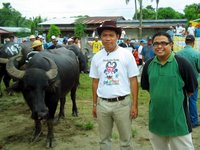 Like in most small towns, the afternoon was reserved for the siesta which is what I did. Hehe! And a small town fiesta would not be complete without basketball games in the town plaza.
Like in most small towns, the afternoon was reserved for the siesta which is what I did. Hehe! And a small town fiesta would not be complete without basketball games in the town plaza.I was surprised that an old pre-war tradition was still being done in San Agustin. Unlike the current fiestas were we hold beauty pageants, San Agustin still organizes a carnival queen or popularity contest. Jules and I were kidding about it since they reverted back to the “dark ages.” Haha! The winner of the competition was the candidate who got the most number of votes, with each vote being purchased. And the coronation night was simply that since the winners were already pre-determined.
The entire town was literally there to watch the event. Traditional dances performed by the various schools of San Agustin opened the coronation night. Then each of the winners was called to march together with their consorts and entourage of flower girls, angels, as well as crown, scepter and sash bearers all in complete carnival queen regalia, up stage where their thrones were waiting for them. This is how pageants used to be done in the old days.
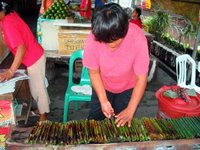 Anyway, the next day, the town fiesta, was marked by a grand parade with the queen and her court paraded around town on decorated floats. I didn’t stay too long since Milenyo was soon to unleash its wrath and I wanted to be back in Pampanga before it did.
Anyway, the next day, the town fiesta, was marked by a grand parade with the queen and her court paraded around town on decorated floats. I didn’t stay too long since Milenyo was soon to unleash its wrath and I wanted to be back in Pampanga before it did.And of course, since I was up north, I made it a point to eat tupig, their native kakanin, which is glutinous rice and other ingredients rolled up in a banana leaf and roasted over a metal plate on top of charcoal. So I ate some at stopovers on the way to Isabela and back home.
Cabanatuan tricycles are cheats!
As an aside to my story, here is a warning to travelers who may by chance find themselves in Cabanatuan City… beware of the tricycle drivers because they are cheats! On my way to Isabela, the tricycle I rode charged me PHP120 for a ride from the terminal to some point in the national highway! I tried to argue with him about it. But my mistake was I didn’t ask the price before I boarded so I had to settle for PHP80. The bastard!
I thought it was an isolated incident but on my way back to Pampanga, I took another tricycle in Cabanatuan from McDonald’s to the bus terminal which was about a kilometer or two away. This time, I asked how much. When he said PHP30, I frowned and walked away. Then he shouted PHP20 so I said yes. When I got off at the terminal, I gave him a PHP50 bill and he said I still lacked ten pesos. When I protested, he said it’s PHP20 but I had to pay for three people since I was alone in the tricycle!
This time I didn’t allow it and protested until he gave me the right change. Imagine, they charge even more than what an air-conditioned taxi would charge for the same distance. The nerve!
These incidents also show how remiss the local government in Cabanatuan City is in regulating and disciplining the tricycles there. Lest they forget they are notorious for having the most number of tricycles in the entire country, the City Government of Cabanatuan should then ensure that incidents like these would not happen by (1) requiring every tricycle to have a fare schedule posted for passengers to see and refer to, (2) posting fare schedules on billboards in tricycle terminals, (3) creating a hotline for complaints with contact numbers conspicuously posted inside the tricycles beside their registration number, and (4) imposing strict disciplinary measures for erring drivers and the associations they are part of (imposing measures on the associations will ensure that members will regulate their ranks).

